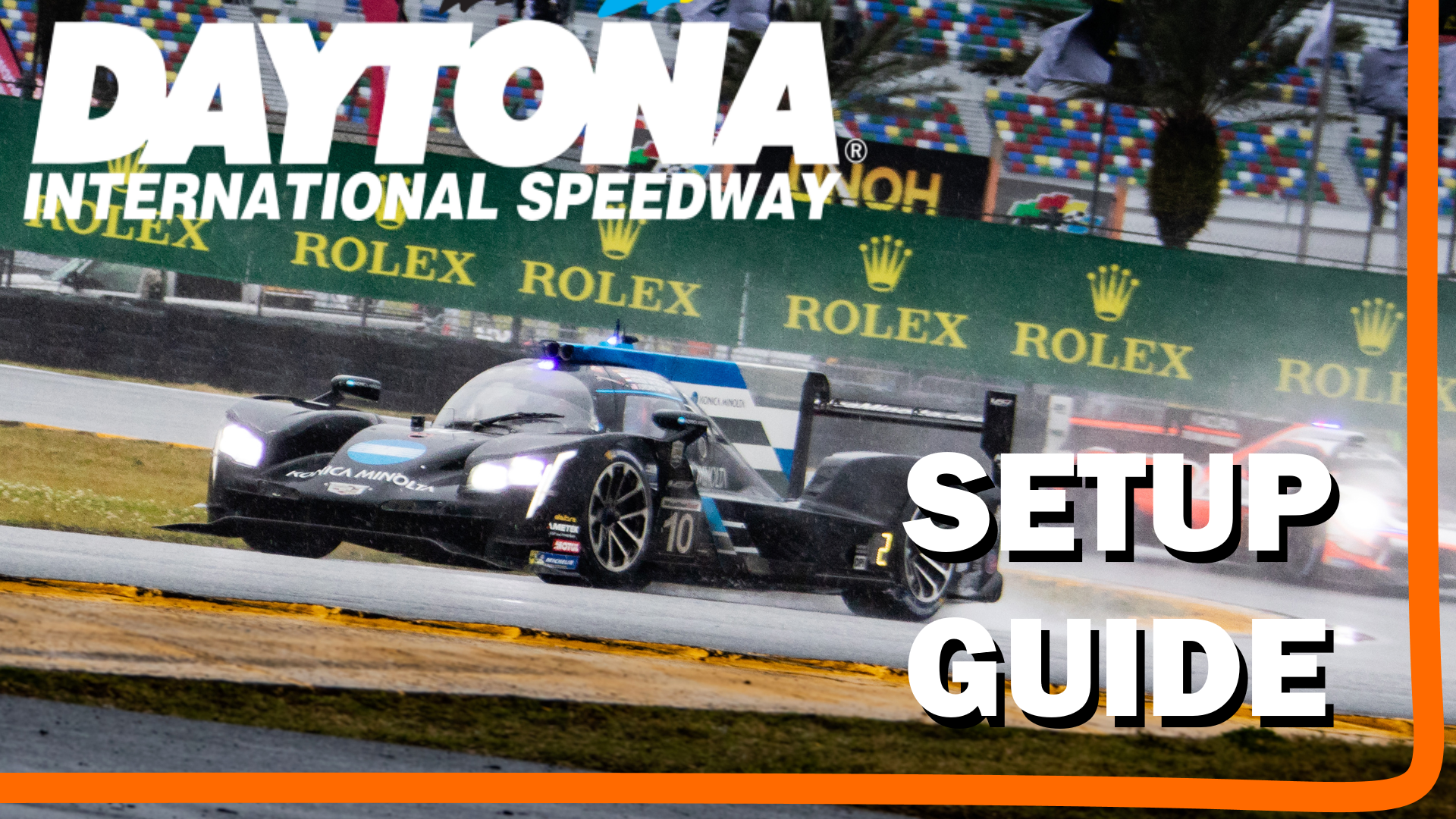Your first focus will be to decide which corners on track are the most important. Which corners are they? That’s easy. It is always the corner(s) leading onto the longest straight(s). For Daytona, it is turn 6 and the exit of the bus-stop-chicane, with the later being even more important simply because it leads onto the longer of the two straights, and into the best passing zone on the track; turn 1. This brings me too…

Priorities
Priority #1: Setting up your car to be settled and ready to receive maximum throttle as you exit the chicane. This will set you up for maximum speed through the banked oval and into the tri-oval, either to fend off attacks or for you to attack the car ahead. This all starts a few corners back, back at the entrance of the bus-stop. It is critical not to over do your approach (don’t out brake yourself!), which allows you to hit the optimal line through turn 9, which I consider the #1 turn to set your car up for. Nail turn 9 and turns 10 and 11 are flat out, which means you get on the throttle sooner and you will get to your top speed sooner than your competitors.
Turn 9 has a very low curb, so you can get on it without unsettling the car much, but don’t fall victim of staying on that curb too long. You want to get to track out, which sets you up for a better line through turns 10 and 11. After getting a stable baseline whole-lap setup utilizing the Virtual Race Car Engineer’s Lap Wizard feature, use the Corner Wizard to maximize the exit of turn 9. The earlier you can be full throttle (which can be way back at the apex, or even better; the entry of turn 9) it will pay dividends all the way to the brakes in turn 1.
Priority #2: Setting up your car to exit turn 6, onto the back straight. Again, you want to get to your top speed faster than your competitor, and you do that by being the first one on the throttle. Again this starts with a good entry to the corner and getting the car rotated into the apex. Once at (or even before) the apex, you can start applying that throttle… with the right setup. First, your setup has to rotate at corner entry, then settle all that weight by the apex, and finally have the grip to apply throttle during the exit phase of the corner. All three of these phases can be tuned using the Corner Wizard in VRCE. Dampers will be your friend to achieve the entry and exit feel that you want.
The problem corner: The one turn that poses the most danger to accidental spins (and massive loss of time) is turn 1. Not only because it is the heaviest braking zone, and passing opportunity, but because you are braking while transitioning off the banking and onto the flat apron. That transition will upset the car during a phase it is already at its limits. Go beyond those limits and you spin out, losing tons of time and possibly positions. It is easy to deduce that saving yourself from those spins will result in a higher finishing position.
While setting up your car, you can pre-plan some safety for this one corner. Pushing some of the brake bias forward will prevent the rear brakes from locking, and it is significantly easier to recover from running slightly wide than a rear brake lockup here. Rear dampers set to be more forgiving under braking will help as well. And lastly, you can do a lot by braking a few meters early to gently lift off the brakes during that abrupt transition, as well as making sure your braking zone is as straight-line as possible. Don’t pinch the turn while braking by keeping it a wide approach to minimize the lateral forces on your tires.
Alien advice
Alien advice: The track is dominated with left hand turns. I would go as far as to argue that the only right-turn that even matters is turn 9. There is nothing to be gained/lost in turns 3 and 5, the other two righties. They are easily defend-able, meaning you can go slower through them and keep your competition behind with ease. The final right is turn 10 which is flat out if you are setup correctly. On the flip side, turns 1, 4, 6, and 8 are all lefties and all significantly more important than the righties.
More advanced drivers may consider going with an asymmetrical setup, biased for left hand turns. The faster you are through those corners, the faster you will be over the entire lap, even if you are slower through the few rights. In VRCE, use the Corner Wizard again. Set it for left corners and understeer. Then look through the three phases of a corner (entry, apex, and exit) to find ways to get your car to turn left even more efficiently. asymmetrical spring rates, caster, camber, and toe settings can all bias your car in favor of those lefties.
You can find more setup guides here
